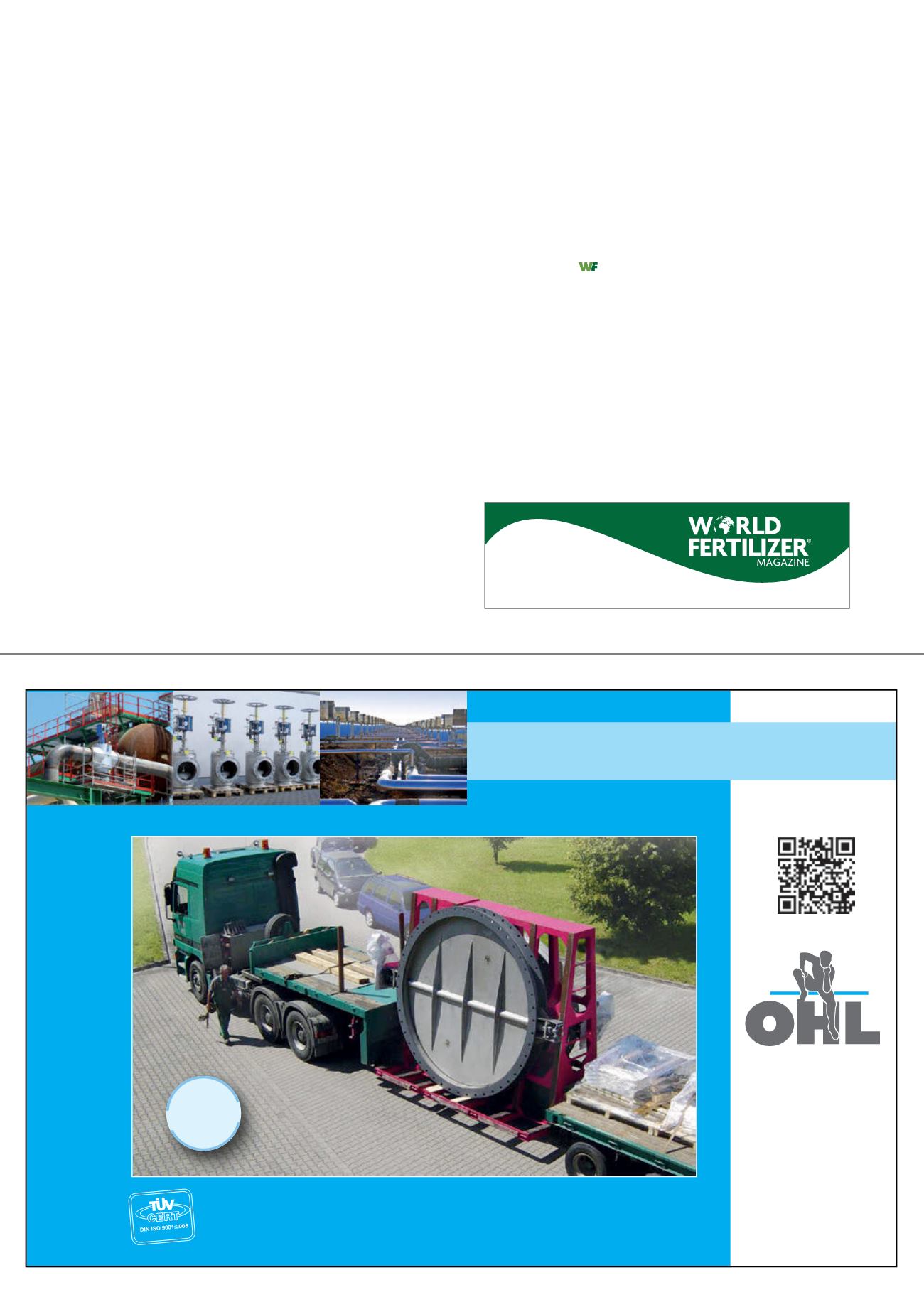
OHL Gutermuth
A control and shut off technique you can rely on.
Customized Valve Design
Others simply sell you a product –
we offer a solution.
OHL Gutermuth
Industrial Valves GmbH
Helmershäuser Str. 9+12
63674 Altenstadt/Germany
Phone +49 6047.8006-0
Fax +49 6047.8006-29
BEST VALVES
SINCE 1
867
MADE IN GERMANY
WE PROVIDE CUSTOMIZED SYSTEM SOLUTIONS
FOR GAS DESULPHURIZATION,
WITH THE EXPERTISE OF AN INTERNATIONAL LEADER IN INNOVATION.
RESULT:
BETTER RELIABILITY, BETTER ECONOMY.
side, which is preferred for gas cooling positions using
water, with a much lower volumetric flowrate, as the
cooling medium.
For plants where the sulfur content of the
hydrocarbon feedstock is high enough that amine
absorbers are the preferred choice for gas sweetening, the
same plate heat exchanger types can be used as for the
amine CO
2
removal process.
Methanation
The methanation converts the remaining CO and CO
2
in
the synthetic gas to methane through an exothermic
nickel catalytic reaction. An efficient methanation is
crucial since carbon oxides deactivate the catalyst in the
Haber ammonia reactor following the methanation
process. The incoming gas from the CO
2
absorber is
preheated with the exiting gas from the methanation
reactor. The methanation process may also be carried out
in several reactors with cooling between every step. Gas
cooling or interchanging in methanation processes where
temperatures are in the 250 – 450˚C range require welded
heat exchangers, preferably of plate type for maximum
efficiency and low maintenance.
Conclusion
Deciding which heat exchanger type is most suitable for
a specific position in an ammonia plant requires careful
consideration. The default choice in the industry is often
shell and tube heat exchangers without a proper
evaluation of the alternative options. Plate heat
exchangers offer much better thermal performance with
tighter temperature programmes, lower fouling levels
and a smaller footprint, and are often a more suitable
option for many positions. It is important to keep in
mind that where gasketed plate and frame heat
exchangers have limited resistance to pressure and
temperature, a welded shell and plate heat exchanger
can, in most cases, carry out the same duty as a shell and
tube heat exchanger but in a much smaller and more
efficient unit.
References
1. THONON, B., GRANDGEORGE, S., and JALLUT, C., 'Effect of
Geometry and Flow Conditions on Particulate Fouling in Plate
Heat Exchangers',
HeatnTransfernEngineering
(1999).
2. YOUSAF, S., 'Ammonia/Urea Plant rejuvenation',
Nitrogen+Syngasn
310
(2011).
3. LIMA, D. F. B., ZANELLA, F. A., LENZI, M. K., and NDIAYE, P.
M., 'Modeling and Simulation of Water Gas Shift Reactor: An
Industrial Case, Petrochemicals',
books/petrochemicals/modeling-and-simulation-of-water-gas-
shift-reactors-an-industrial-case (2012).
4. HAWS, R., 'Contaminants in Amine Gas Treating' (2009).
Register to
receive a regular copy


